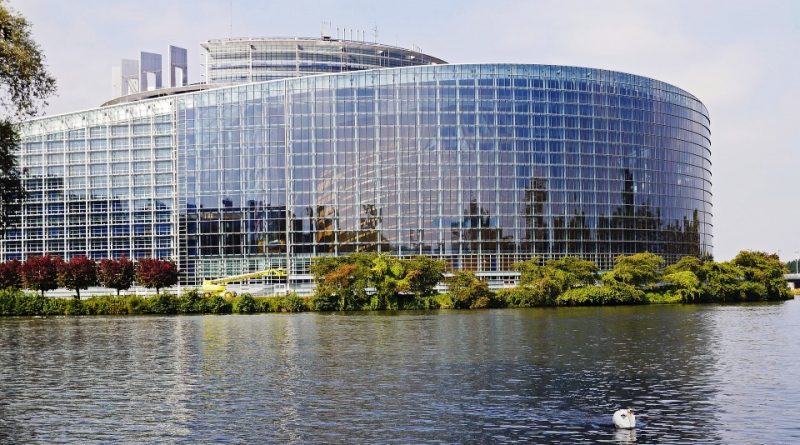EU strategy for biodiversity until 2030
EU strategy for biodiversity until 2030
The European Union, like other nations of the earth, has understood that in this direction, that is, that linked to the current economic model, there is no going anywhere.
The loss of biodiversity, habitats, natural and renewable resources is proceeding at an impressive pace without this question actually entering into the real political and economic debate.
It is now increasingly evident that biodiversity is at the basis of human well-being; the issue is that it is currently under enormous pressure from human activities; pressure not governed or poorly governed.
The EU Strategy for Biodiversity Initiative until 2030 from a clear and clear address of the EU’s ambitions for the post-2020 global framework. An initiative that will be adopted in October 2020 at the United Nations conference on biodiversity, scheduled in Kunming, China.
In a nutshell, in this initiative, the European Union undertakes to:
– limit the loss of biodiversity;
– preserve and restore ecosystems.
The EU intends to lead by example in the negotiations conducted worldwide to stop the loss of biodiversity and safeguard ecosystems.
The Commission adopted it on 20 May 2020, World Bee Day, in parallel with “Farm to Fork”, the strategy dedicated to making the agri-food sector more sustainable.
Both programs are part of the package of initiatives promoted with the Green Deal by Ursula von Der Leyen.
Both programs intend to implement a model of balance between human activities and the natural environment.
The recent COVD-19 pandemic, which is identified by many as a process accelerator, has exposed the fragility of a liberal economic model without ecological rules destined to die.
The new biodiversity strategy aims to restore biological heritage in Europe by 2030, improving the implementation of current legislation and defining new commitments, measures, objectives and governance mechanisms.
This strategy includes, among others, that of transforming at least 30% of the lands and seas of Europe into effectively managed protected areas.
The goal is to take the model on existing Natura 2000 areas as a model, integrating them with nationally protected areas.
Among other objectives there is also that of restoring degraded ecosystems, due to various pressures, which are in increasingly precarious conditions; here too the intent is to reduce the pressures that interfere with biodiversity and therefore the loss of habitats.
To achieve this objective, however, it is necessary to enter into the merits of a new legal system and binding targets, without which one risks the already known failures of previous initiatives in this area.
In the Biodiversity Strategy until 2030, the European Union intends to:
– improve the conservation status of at least 30% of EU habitats and species whose status is not satisfactory today;
– recover at least 25,000 km of free flowing rivers;
– stop and reverse the decline of birds and insects on agricultural land, in particular pollinators;
– reduce the use and risks of chemical pesticides in general, halving which are more dangerous;
– use at least 25% of the arable land for organic agriculture, improving the spread of agroecological practices;
– reduce the use of fertilizers by at least 20%;
– plant at least 3 billion trees, in full compliance with ecological principles, and protect the primary and ancient forests that still exist;
– avoid “by-catches” of protected species or reduce them to a level that allows for full recovery of populations.
The strategy foresees a financing of 20 billion a year between EU, national and private funds. The communications, which also pave the way for the use of new biotechnologies in the field, are not binding but indicate the guidelines for future legislative acts to be agreed with the Council and the European Parliament.
As usual, however, we would like to make a note of all this, not in terms of criticism, as it is a strategy of absolute respect and depth of vision but to the link existing today between the European Union’s policies and the policies of the Member states.
If the debate on the asset value of biodiversity, its repercussions both in terms of citizens’ health and the environment, will not enter the classrooms at the EU Biodiversity Strategy until 2030, which foresees a great financial and energy effort of parliaments, as usual, we will see a Europe with multiple speeds and overlapping policies, often divergent and inefficient.
In this sense, another part, perhaps even more important, should be made by the economic-financial system. It is necessary that the banking and financial system change its evaluation algorithms, leaving the management of a wealth and a currency considerably disengaged from these visions and strategies.
In short, if you do not review the rules established by the Bretton Woods agreements, where in fact a system of rules and procedures to control international monetary policy has been defined, in new terms of sustainability of the issues of currencies and world financial systems , we risk implementing interesting programs but without the legs of a sustainable economy.
That Ecological and Social Economy, referred to by many economists and the foundation of Pope Francis’ Encyclical Laudato Sì, without which the right hand cannot indicate directions which are opposite to those of the left hand.
There is the risk of definitively tearing the weak body of the Modern States.
Guido Bissanti

